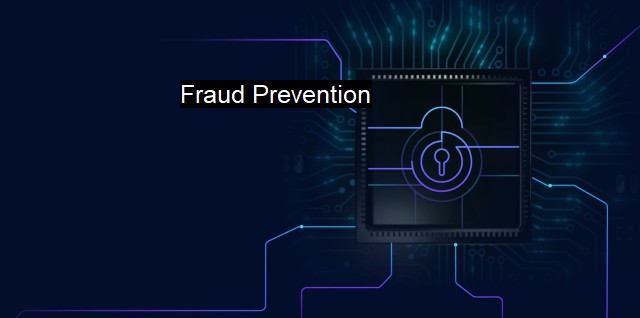What is Fraud Prevention?
Antivirus Software & Fraud Prevention: A Comprehensive Explanation of the Role of Technology and Strategies in Cybersecurity
Fraud prevention is a set of proactive measures that individuals, corporations, and governments use to detect, prevent, and report fraud attempts that are operations carried out in digital spaces. With the increasing everyday technology use, the internet, and social media platforms, fraud has rapidly shifted from physical to digital crime scenes. To safeguard digital landscapes, therefore, the concept of fraud prevention, which is significant in today's cybersecurity protocols, has been redefined in the era of the internet.Fraud prevention is essential in maintaining system security. It requires an integrated and proactive approach to anticipate, identify, and respond quickly to impending threats, attacks, or suspicious activities. This means it goes beyond merely setting up antivirus software.
Cyber fraud is a cyber-attack method designed to defraud unsuspecting individuals or masses of their belongings by exploiting system vulnerabilities. Given the ever-evolving nature of technology, cybersecurity fraud is becoming sophisticated, requiring advanced fraud prevention mechanisms such as robust antivirus software.
Antivirus software plays a crucial role in fraud prevention by protecting a computer or network system against digital invasion by viruses, SpyWare, or HarmWare. The sophistication in the technology they leverage provides contemporary holistic solutions. This includes tasks like real-time scanning and detection of unknown and malicious files. It acts as a wall against virus entry, reducing chances of fraud attacks via malwares such as phishing, ransomware, or other sophisticated techniques.
Incorporating machine learning and artificial intelligence, feather-edge antivirus software enables the proactive, early prevention of threats and not just detection. They trace ransomware patterns, identify illegal access instances, and flag suspicious email traffic indicating phishing attempts. This acts as an informed alarm for future attacks aimed at defrauding a user of their data or money.
Fraud prevention isn't purely a technical affair but includes a human aspect. That is, real-time user training and awareness augment antivirus efficacy. By imparting knowledge about discernable fraud characteristics and signs such as suspicious emails, unsolicited social media messages, and unusually slow running software, users can take precautionary measures reducing their vulnerability to fraud.
Also, fraud prevention in cybersecurity embraces ethical principles like confidentiality, ensuring that users' sensitive data remains private and confidential. This is accomplished by encryption practices that make understandable data unreadable unless decrypted. It eradicates interceptors' opportunities of using possessed data to defraud the actual owner.
Fraud prevention is also shaped around authentications. They involve establishing the legitimacy of a user before accessing a system or certain data. These could include two-factor authentication, biometrics, or digital signatures, all focused on frustrating fraudsters' effort by complicating system breaches.
Fraud prevention extends its considerations to regular software updates and third-party security auditing. Software updates are meant to optimize the system against all potential threats. Updates regularly patch potential vulnerabilities and thus keep pace with the ever-evolving cyber threats aiming to defraud people of their assets. Third-party audits, on the other hand, provide an extra pair of eyes to trace system vulnerabilities, identify breaches, and recommend the treatment processes for better fraud prevention.
Fraud prevention in the time of digital migration requires a multi-layered comprehensive strategy that is brute and proactive. It includes versatile antivirus software, regular software updates, authentications, audits, plus user awareness, to name several. As threats to cheat technology users off their belonging become more sophisticated, so should fraud prevention mechanisms. With these, a more secure and reliable digital community will be envisioned.

Fraud Prevention FAQs
What is fraud prevention?
Fraud prevention is the set of measures, tools, and strategies used to avoid or prevent fraudulent activities. It involves identifying, detecting, and stopping any attempted or ongoing fraudulent scheme before it causes financial or reputational damage.Why is fraud prevention important in cybersecurity?
Fraud prevention is crucial in cybersecurity because cybercriminals often use fraudulent tactics to gain access to sensitive data or systems. Cyber fraud can cause significant financial losses for individuals and organizations, disrupt business operations, and damage brand reputation. A robust fraud prevention strategy helps to reduce the risk of becoming a victim of cybercrime.What are some common fraud prevention measures used in antivirus programs?
Antivirus programs often use several fraud prevention measures, including real-time scanning, behavioral analysis, and AI-based algorithms. Real-time scanning checks all files and content as they enter or leave the system for any signs of viruses or malware. Behavioral analysis involves analyzing the behavior of the program and identify any suspicious activity. AI-based algorithms can detect and respond to new and emerging threats faster than traditional signature-based detection methods.What can individuals do to protect themselves from fraud?
Individuals can take several steps to protect themselves from fraud, such as regularly changing passwords, using two-factor authentication, avoiding clicking on suspicious links or opening attachments from unknown sources. It is also crucial to keep antivirus software up-to-date, avoid using public Wi-Fi networks, and monitor account activity regularly.| | A | | | B | | | C | | | D | | | E | | | F | | | G | | | H | | | I | | | J | | | K | | | L | | | M | |
| | N | | | O | | | P | | | Q | | | R | | | S | | | T | | | U | | | V | | | W | | | X | | | Y | | | Z | |
| | 1 | | | 2 | | | 3 | | | 4 | | | 7 | | | 8 | | |||||||